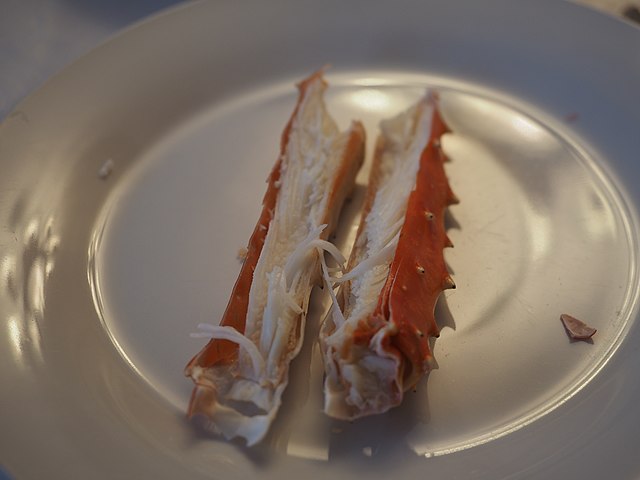Landlocked Hunchun city in Jilin Province on the China border with Russia and North Korea is checkmating conventional sea ports in king crab supplies.
Situated 42 km from the nearest port in Russia and 15 km off the Sea of Japan, Hunchun nevertheless gets crustacean riches first.
According to Xinhua on July 8, 2025, the city is the first stop of crabbing fleets from the remote reaches of the Pacific.
Since China dominates fishing in territories outside its sovereign waters, king crab supplies from Huchun represent 80% of nationwide distribution.
The bulk comes from Russia, whose “kamchatka crabs” are highly prized in high-end food markets in faraway Shanghai and Beijing.
Russia’s Prized Crab
The popularity of Bering Sea’s king crabs despite their premium import price is bespoke of booming cross-border trade with Russia.
Russia’s supplies use mainly the Posyet Port and travel the 42 km to Hunchun via surface means, under refrigerated conditions.
Hunchung’s checkpoint solves the geographical divide as a legal transit for over 1.5 million king crabs annually into inner China.
These crabs reach their destinations still live thanks to en-route cold facilitation in oxygen purifiers, at sea temperatures below -1ºC.
Zhu Yang of Hunchun Digital Border Trade Technology Service company limited in July 2025 recounted to Xinhua of their smart refrigeration.
Yang says that the tech has insured 97% crab survival rate during cross-China transportation in journeys that sometimes last 3 days.
Likewise lured by such preservation technology and general nearness to Russia, seafood merchant Wang Jingdong in recent years set base in Hunchun. By 2021, his Hehe Seafood Co. Ltd was importing 4.26 million kg of king crabs.
It is such success stories that have cemented Hunchun as China’s king crab main entry point into 2025. To learn more about the Far-east country’s place in the global trade of the premium crustacean, scan the following statistics.
China King Crab Statistics
China is a high-end market for king crab from mainly the northern Pacific Ocean and Bering Sea. In 2024, the country imported $2.1 billion in crabs (mainly king and snow crabs), $1 billion of which of Russian origin. With an import total of 133,000 tonnes that year, this was 12% more volume than in 2023. Of this volume, import totals of Russia’s snow and king crab niches hit 35,000 tonnes, a 5,000-tonne increase year-on-year.
How much king crab tonnage reaches China from Russia each year?
China is the biggest single market for crabs with an origin in Russia. Between January and November 2023, Russia’s king crab supplies via all entry points to China hit 23,605 tonnes. 2,300 tonnes of these, together with other seafood, entered via the northeast Hengsha Port. 2023’s imports of king crab from Russia helped drive all-China live seafood imports from its neighbor by 430%, above the 2022 equivalents. According to the Food and Agriculture Organization (FAO), China imported 18,503 tonnes of diverse species of crabs from Russia halfway through 2023.
Does imported king crab cost much in China?
In 2024, the average live crab import price by China from Russia steadied at $32.57 a kg, a premium rate. This was versus live imports of Dungeness crab from Canada at an average $18.76 a kg during the same timeline.
